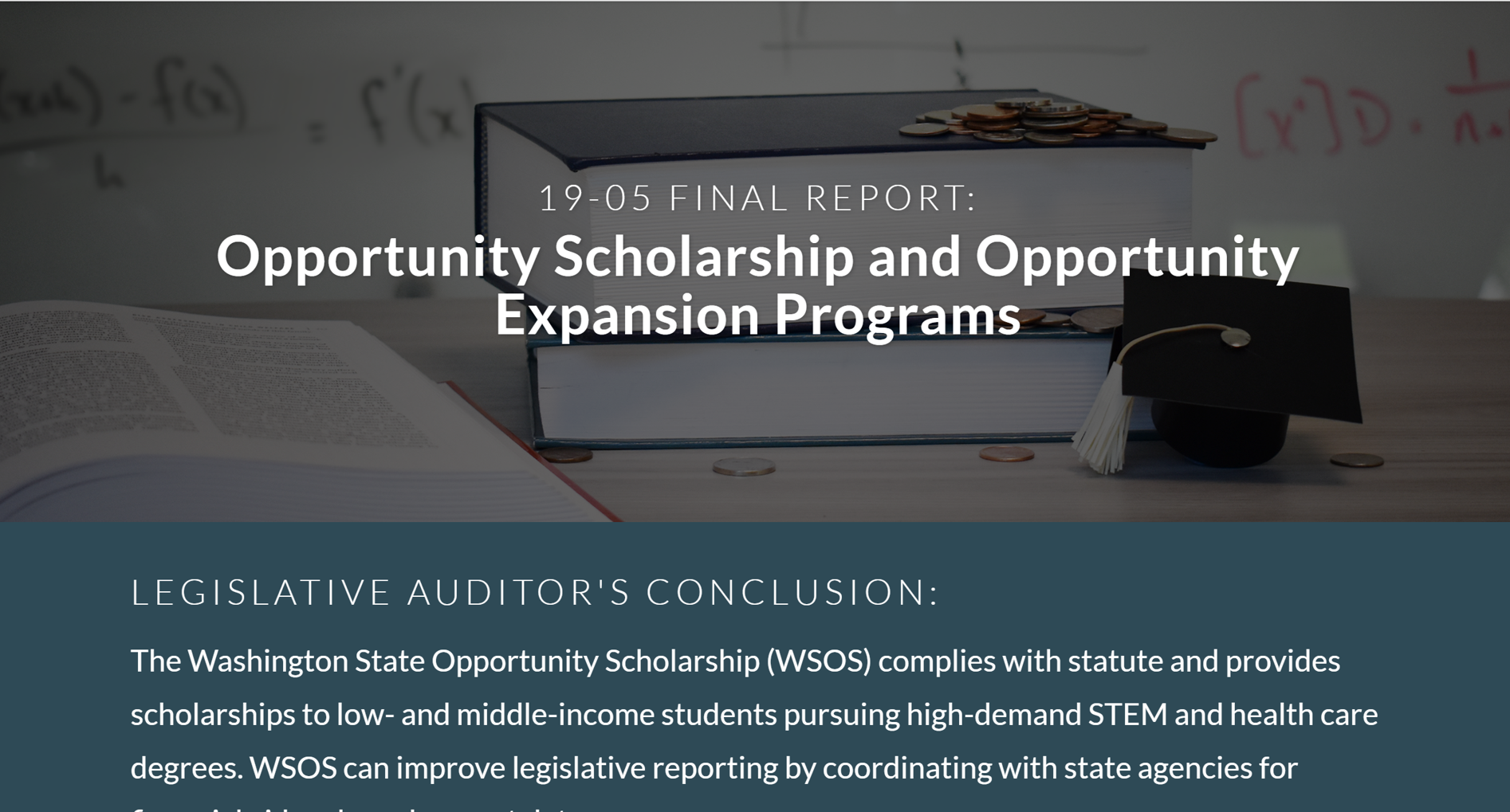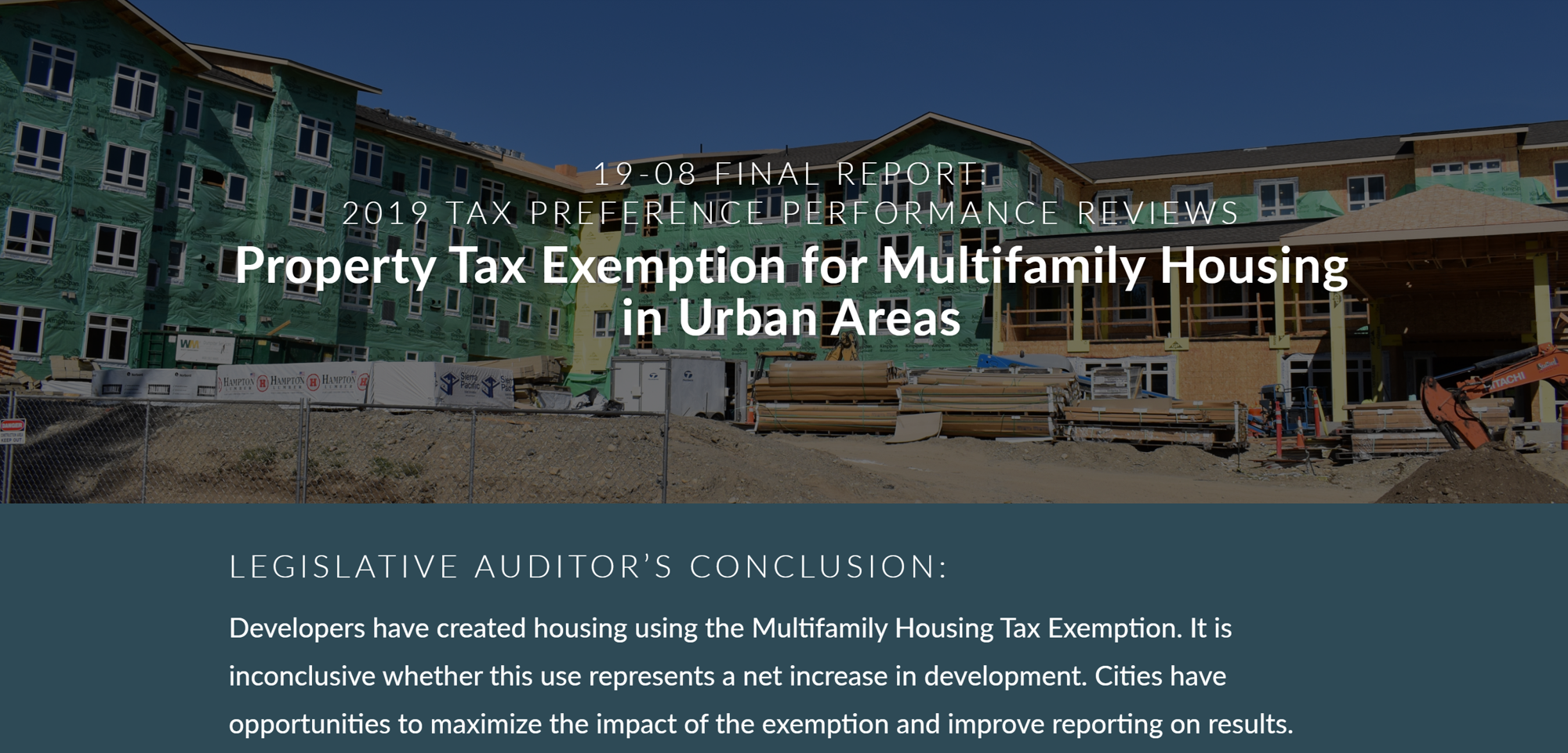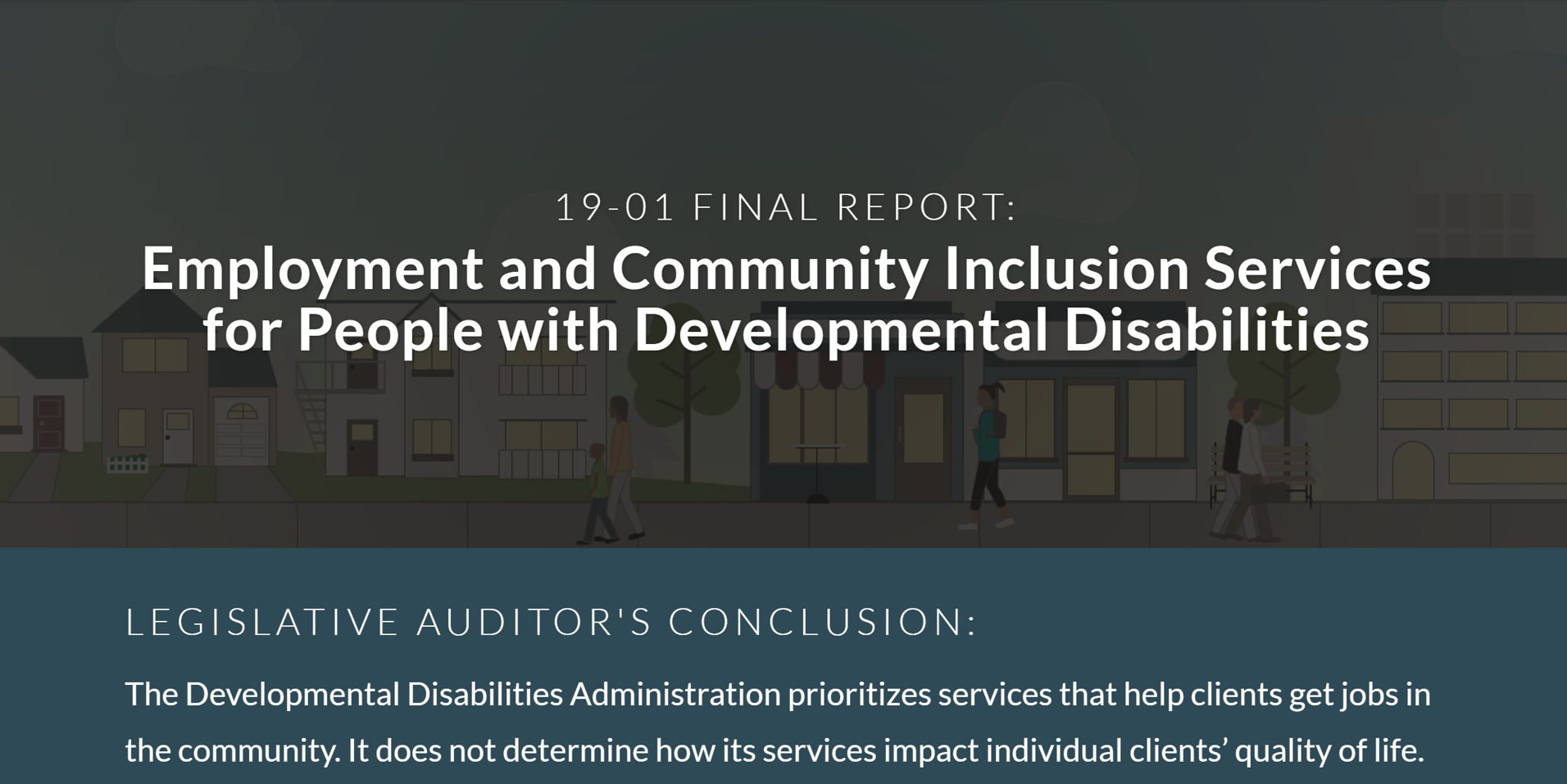| Report Title |
Agency |
Recommendation |
Recommendation Category |
Implementation Status |
| Unemployment Insurance Training Benefits Report 16-01 |
ESD |
The ESD should prepare a plan to identify reasons why outcomes improve for
some training benefits participants and not others, and determine whether there
are opportunities to change the Program to improve outcomes for all
participants. |
Improve service delivery |
Action in progress |
| Unemployment Insurance Training Benefits
Report 16-01
|
ESD |
The ESD should develop a plan and associated cost estimate to improve its
administration of the Training Benefits Program, to include: improving the
application form, improving guidance to its Program partners, improving the
timeliness of its decisions, establishing quality assurance review, and
improving its performance measures. |
Improve program management |
Action in progress |
| Second Sunset Review of UW's Alternative Process for Selecting Medical
Facility Construction Contractors
Report 17-01
|
UW |
The Legislature should continue UW’s alternative process for selecting medical
facility construction contractors because overall timeliness and contractor
performance ratings have improved. |
Improve legislative oversight |
Implemented |
| Second Sunset Review of UW's Alternative Process for Selecting Medical
Facility Construction Contractors
Report 17-01
|
UW |
The UW should establish timeliness goals for selecting a contractor and
beginning construction, and annually monitor its progress in meeting its goals.
The UW should report this information to the CPARB by September 2017, and in its
subsequent biennial reports. |
Improve program management |
Action in progress |
| Second Sunset Review of UW's Alternative Process for Selecting Medical
Facility Construction Contractors
Report 17-01
|
UW and OMWBE |
In consultation with the OMWBE, the UW should identify the barriers it
believes impede its use of certified minority and woman owned firms and suggest
remedies to those barriers. The UW should report this information to the CPARB
by September 2017, and in its subsequent biennial reports. CPARB can then
determine whether or not to recommend policy changes to the Legislature. |
Improve service delivery |
Action in progress |
| Unaccompanied Homeless Youth
Report 17-03
|
Commerce |
Commerce should brief relevant legislative committees about how current
consent law is interpreted, its effect on collecting data from homeless youth,
and the potential impacts and trade-offs of collecting this data to evaluate
program outcomes. |
Improve agency reporting and communication |
Implemented |
| Unaccompanied Homeless Youth
Report 17-03
|
Commerce |
Commerce should develop program-specific performance measures. Commerce should
incorporate performance measurement into grant agreements beginning in fiscal
year 2018. |
Improve program management |
Implemented |
| Unaccompanied Homeless Youth
Report 17-03
|
Commerce and OSPI |
Commerce and OSPI should issue joint guidance to counties and school
districts, and clarify how they can work together to improve estimates of the
unaccompanied homeless youth population. |
Improve program management |
Implemented |
| Governor’s Interagency Coordinating Council on Health Disparities
Report 17-04
|
The Council |
The Council should submit action plan updates every two years with content
that reflects the entire prioritized list of health disparities. |
Improve program management |
Partially implemented |
| Governor’s Interagency Coordinating Council on Health Disparities
Report 17-04
|
The Council |
The Council should include the status of all recommendations and all diseases,
conditions, and health indicators from the prioritized list in its progress
reports. |
Improve agency reporting and communication |
Action in progress |
| Puget Sound Partnership 2016
Report 17-05
|
Partnership and OFM |
The OFM and the Partnership should submit a plan to the Legislature that
details how they will create a more complete inventory of recovery actions and
funding. |
Improve agency reporting and communication |
Implemented |
| Puget Sound Partnership 2016
Report 17-05
|
Partnership and OFM |
The OFM and the Partnership should submit a plan to the Legislature that
details how they will create a more complete inventory of recovery actions and
funding. |
Improve agency reporting and communication |
Implemented |
| Puget Sound Partnership 2016
Report 17-05
|
Partnership and OFM |
The Partnership should submit a plan to the Legislature that details how it
will address the deficiencies in its ability to meet the essential requirements
for a monitoring program, as identified by JLARC staff. The plan should also
address how the Partnership will improve and clarify links between monitoring
and planning. |
Improve agency reporting and communication |
Implemented |
| Fees Assessed for Forest Fire Protection
Report 17-06
|
DNR |
DNR should clarify the definition of forest land and implement a process to
consistently apply the definition across the state. |
Improve service delivery |
Action in progress |
| Fees Assessed for Forest Fire Protection
Report 17-06
|
DNR |
DNR should coordinate with county officials to create consistent policies for
administering the assessment. DNR should develop consistent guidance for county
officials to address parcel changes that impact the assessment. DNR should
solicit input from county officials to ensure that they can efficiently and
effectively implement the guidance. In addition to guidance, DNR should develop
a policy regarding communications with county officials. |
Improve program management |
Action in progress |
| Measuring Outcomes of Land Acquisitions and Regulations
Report 18-01
|
RCO and OFM |
OFM and RCO should develop and submit a joint plan to the Legislature
detailing the actions, costs, and timelines needed to comply with statutes
that direct them to measure performance of land acquisitions and related grant
programs.
- RCW 43.41.270 directs OFM to assist natural resource agencies in
developing outcome-focused performance measures for administering natural
resource-related and environmentally based grant and loan programs.
- RCW 79A.15.065 directs RCO to develop outcome-focused performance measures
to be used for management and performance assessment of grant programs.
- Neither requirement has been implemented.
|
Improve agency reporting and communication |
Implemented |
| Measuring Outcomes of Land Acquisitions and Regulations
Report 18-01
|
Legislature |
If the Legislature wants reliable information about the outcomes of
regulatory programs implemented at the local level, it should consider
requiring state agencies to work with local governments to develop
outcome-focused performance measures.
Agencies should work with local governments to develop an approach to
monitoring and work with the Legislature to identify funding needs and
sources. The effective practices identified in Commerce’s guidance for local
governments and the consultants’ analysis in Appendix 2 would inform the
development of performance measures and a monitoring approach
|
Improve legislative oversight |
Implemented |
| Measuring Outcomes of Land Acquisitions and Regulations
Report 18-01
|
DNR, WDFW, and State Parks |
DNR, WDFW, and State Parks should provide the Legislature with a plan
detailing the resources necessary to report stewardship needs. |
Improve agency reporting and communication |
Implemented |
| Wildfire Suppression Funding and Costs
Report 18-02
|
DNR |
DNR should refine its collection of key data elements and seek input from the
appropriate Legislative committees.
The DNR should identify the key data
elements it needs for internal management and for responding to the most common
information requests. This will likely revise the current list of data
collected, and some information may no longer be needed. The agency should
propose its list of data elements to the appropriate legislative committees of
the House and Senate to ensure the data will meet legislative needs. DNR should
plan to periodically review this list internally and with the Legislature on an
ongoing basis. |
Improve program management |
Action in progress |
| Wildfire Suppression Funding and Costs
Report 18-02
|
DNR |
DNR should improve the accuracy and reliability of the key data elements it
collects Wildfire Suppression Funding and Costs.
After DNR has refined
the data elements it will collect (as described in the prior recommendation), it
should implement agency-wide policies and procedures for data entry and
validation to ensure that the data collected and reported is accurate and
reliable. |
Improve program management |
Action in progress |
| Wildfire Suppression Funding and Costs
Report 18-02
|
DNR |
DNR should develop a systematic and verifiable way to identify the costs of
individual fires.
There are a variety of ways that DNR can achieve this,
from simple to complex. For example, methods could include a single
spreadsheet-based index of all project codes, adding fields to existing
databases, or creating an interface between the financial and fire data systems.
DNR also should consider having a consistent set of fields for the spreadsheets
used to track fire codes at the regions.
Any approach should ensure that
the list of codes is consistently maintained and updated throughout the fiscal
year to improve the efficiency and accuracy of reporting. |
Improve cost effectiveness and resource use |
Action in progress |
| DES/OFM Approach to Assessing Contracting Options
Report 18-03
|
DES and OFM |
DES should collect and retain evidence of contractor and DES cost and
performance data associated with the pilot projects and any additional contracts
entered through this statutory process. |
Improve cost effectiveness and resource use |
Implemented |
| Employment and Community Inclusion Services for People with Developmental
Disabilities
Report 19-01
|
DSHS and DDA |
DDA should implement a system to measure quality of life outcomes for its
clients in employment and community inclusion services. |
Improve service delivery |
Not implemented to date |
| Employment and Community Inclusion Services for People with Developmental
Disabilities
Report 19-01
|
DSHS and DDA |
DDA should ensure that all clients are notified of the option to switch to
community inclusion services. DDA should verify and track whether its staff
follow the legislative requirements in RCW71A.12.290. |
Improve service delivery |
Implemented |
| Employment and Community Inclusion Services for People with Developmental
Disabilities
Report 19-01
|
DSHS and DDA |
DDA should continue to strengthen and expand community inclusion services. As
required by RCW71A.12.290, DDA should continue to work with counties and
stakeholders to strengthen and expand community inclusion services. In doing so,
DDA should continue its efforts to train and assist service providers. It also
should analyze the service capacity in each county and the sufficiency of
payment rates for providers. |
Improve service delivery |
Not implemented to date |
| Analyzing Development Costs for Low-Income Housing
Report 19-02
|
Commission |
The Commission should identify and evaluate options for increasing the
involvement of for-profit developers in the 9% tax credit program and report
their findings to the Legislature. |
Improve cost effectiveness and resource use |
Implemented |
| Analyzing Development Costs for Low-Income Housing
Report 19-02
|
Commerce |
Commerce should collect final development cost data from Housing Trust Fund
recipients to improve cost controls. |
Improve cost effectiveness and resource use |
Action in progress |
| Analyzing Development Costs for Low-Income Housing
Report 19-02
|
Commission and Commerce |
Commerce and the Commission should report development cost data to the
Legislature annually. |
Improve cost effectiveness and resource use |
Action in progress |
| Performance Measurement of Homelessness Programs
Report 19-03
|
Commerce |
When implementing the planning and reporting requirements in RCW 43.185C.040
and RCW 43.185C.045, Commerce should clearly explain how its actions will
measurably contribute to the state’s goal of ending homelessness. |
Improve agency reporting and communication |
Implemented |
| Performance Measurement of Homelessness Programs
Report 19-03
|
Commerce |
Commerce should implement processes to track compliance with WSQA application
requirements in RCW 43.185C.210. |
Improve program management |
Underlying issue resolved |
| Opportunity Scholarship and Opportunity Expansion Programs
Report 19-05
|
WSOS and OFM |
WSOS should develop and implement a plan to coordinate with state agencies
such as the OFM's Education Research and Data Center, the WSAC, and the ESD to
provide additional information in its annual legislative reports. Planning
efforts should focus on how to compile, protect confidentiality, and include
financial aid and employment data on Opportunity Scholars. WSOS should include
updates on its plan implementation and any additional metrics in its annual
legislative reports. |
Improve program management |
Action in progress |
| Opportunity Scholarship and Opportunity Expansion Programs
Report 19-05
|
WSOS |
WSOS should include its overall non-scholarship costs, including the total
cost to administer the Opportunity Scholarship program, in its annual
legislative report. |
Improve agency reporting and communication |
Implemented |
| Joint Center for Aerospace Technology Innovation Sunset Review
Report 19-06
|
Legislature |
The Legislature should continue JCATI because it is meeting legislative intent
to pursue university-industry aerospace research, enhance the education of
students, and work with aerospace firms in Washington. Without legislative
action, JCATI will end on July 1, 2020. |
Improve legislative oversight |
Implemented |
| Follow-Up on WSDOT's Long-Term Estimates of Bridge Preservation Needs
Report 19-07
|
WSDOT |
WSDOT should report to the Legislature on its progress with implementing its
bridge management system. |
Improve cost effectiveness and resource use |
Implemented |
| Follow-Up on WSDOT's Long-Term Estimates of Bridge Preservation Needs
Report 19-07
|
WSDOT and OFM |
WSDOT and OFM should develop and implement a plan to communicate long-term
bridge preservation needs accurately, reliably, and transparently. |
Improve agency reporting and communication |
Implemented |






 The
Joint Legislative Audit and Review Committee (JLARC) staff received the 2020
Excellence in Research Methods Award from the National Legislative Program
Evaluation Society (NLPES) for the study of
The
Joint Legislative Audit and Review Committee (JLARC) staff received the 2020
Excellence in Research Methods Award from the National Legislative Program
Evaluation Society (NLPES) for the study of  The Joint
Legislative Audit and Review Committee (JLARC) staff received the 2020 Impact Award
from the National Legislative Program Evaluation Society (NLPES) for the study of
The Joint
Legislative Audit and Review Committee (JLARC) staff received the 2020 Impact Award
from the National Legislative Program Evaluation Society (NLPES) for the study of  The Joint
Legislative Audit and Review Committee (JLARC) staff received the 2020 Notable
Document Award from the National Conference of State Legislature's (NCSL) Research
Librarian staff section for the study of
The Joint
Legislative Audit and Review Committee (JLARC) staff received the 2020 Notable
Document Award from the National Conference of State Legislature's (NCSL) Research
Librarian staff section for the study of  First
responder mapping system in K-12 schools can be improved with training, outreach
strategies, and data use
First
responder mapping system in K-12 schools can be improved with training, outreach
strategies, and data use Medicaid
reimbursement under CARES programs is unlikely to generate additional savings for
state
Medicaid
reimbursement under CARES programs is unlikely to generate additional savings for
state Washington
State Patrol pursuit vehicle replacement decisions should be based on a revised
analysis
Washington
State Patrol pursuit vehicle replacement decisions should be based on a revised
analysis Alternative public works contracting methods are widely used and should be
continued
Alternative public works contracting methods are widely used and should be
continued
 Amount of
economic activity attributable to Local Infrastructure Finance Tool (LIFT) is
unknown
Amount of
economic activity attributable to Local Infrastructure Finance Tool (LIFT) is
unknown

